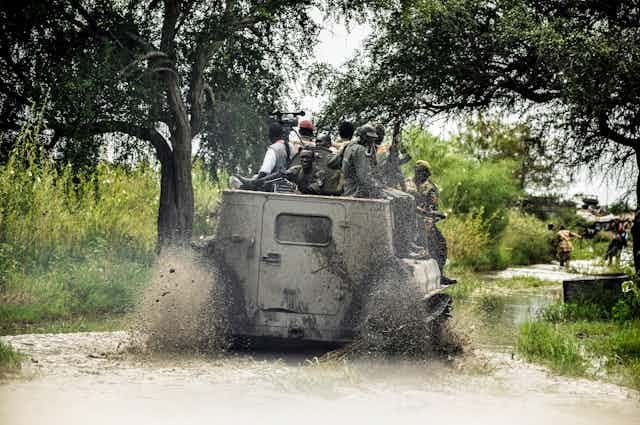The UN’s most senior official for humanitarian affairs has proclaimed “the largest humanitarian crisis” since 1945, a complex of conflicts, famines and refugee crises unfolding across several countries from the Middle East to West Africa. Alongside the catastrophes playing out in Yemen, Somalia and north-east Nigeria, he also mentioned one of the most beleagured countries on the African continent: South Sudan.
The UN has been trying to sound the alarm on what’s happening there for some time, recently issuing a formal famine declaration for the country’s Unity state. Around 5m people in South Sudan are suffering from extreme hunger, and without further intervention, the crisis may well spread to other parts of the country.
On the international scale used to gauge food security, the Integrated Phase Classification (IPC), famine is the most serious level, and its figures from South Sudan found that in 23 counties on which it holds recent data, acute malnutrition levels are shockingly high. In February 2017, the IPC South Sudan Technical Working Group issued a warning that in the southern part of Unity state, one in three children is acutely malnourished – an unprecedented crisis in the area. And it promises to get worse.
As Philippe Guiton, humanitarian director at the NGO CARE International, put it:
20m people at risk of famine would be like the entire country of Australia facing potential starvation … The common denominator in all these countries that are at risk of famine is conflict. In places like South Sudan, humanitarian aid is what has prevented famine from ravaging the country. The areas that have been declared famine, are areas where aid groups cannot reach people with food supplies due to insecurity from the conflict.
Coming apart
The scale of the disaster should not be underestimated. And one of its various tragedies is that like the famines unfolding places such as Somalia and Yemen, it’s not some random calamity, but the man-made consequence of a disastrous internal conflict.
South Sudan’s current war began as a political rift between two leaders: the South Sudanese president, Salva Kiir, and his vice-president, Riek Machar. The unity government they formed fell apart in 2013 over allegations that Machar had planned a coup against Kiir. The country quickly returned to violent conflict, and since then, the war has spiralled out of control. It is now clearly patterned along ethnic lines, with Machar (a Nuer) and Kiir (a Dinka) mobilising their respective groups.

The government has all but collapsed, while the countryside is full of young men with weapons who are familiar with violence. Various forces are resisting the government, which is duly responding with extreme violence. At the end of 2016 the UN warned that South Sudan was on the brink of genocide, but a scheduled arms embargo was blocked by a divided UN Security Council. And so the war continues.
Stepping in
In many parts of South Sudan, humanitarian aid alone has so far kept people alive, but it’s becoming extremely dangerous for those distributing it to operate in the areas most seriously affected. Aid workers and convoys have been obstructed and attacked by all sides as order has gradually fallen apart.
The outside world is pitching in from various angles. The EU’s commissioner for humanitarian aid and crisis management and Pope Francis are both exhorting both the government and the opposition to stop blocking aid deliveries, but also calling on the international community to step up efforts to provide additional food aid.
As things stand, the UN is the only organisation keeping many South Sudanese people alive, but it’s gradually being squeezed out of the country’s most desperate areas. Internal displacement and increased numbers of refugees in neighbouring areas are also exacerbating the fragile security and food situation and spreading the crisis. The UN’s declaration of famine is therefore nothing so much as a cry for help from the world at large.
But the fundamental problem runs far deeper than the logistics of aid delivery, however important that is. Until security is established and a ceasefire signed, no solution to the catastrophic famine will be found. So long as it’s too hazardous for most humanitarian organisations to operate, people will continue to starve. There is as yet no attempt to construct an inclusive dialogue that could, for example, lead to a credible or sustainable power-sharing agreement between the two sides, one that would give both sides some confidence that their ends might be met.
South Sudan also has very few, if any, centralised security services capable of maintaining or enforcing peace. This demands boots on the ground, wherever they come from. In Somalia, the continuing African Union mission, AMISOM, at least provides some security to some of the country. South Sudan requires the same at a miniumum, and probably also an ongoing peacekeeping mission to keep the increasingly ethnicised warring factions apart.
South Sudan is unlikely to find any peace without significant international support. In the long term, that will require a reconstructed domestic government that can act in good faith – and that seems a long way off.

